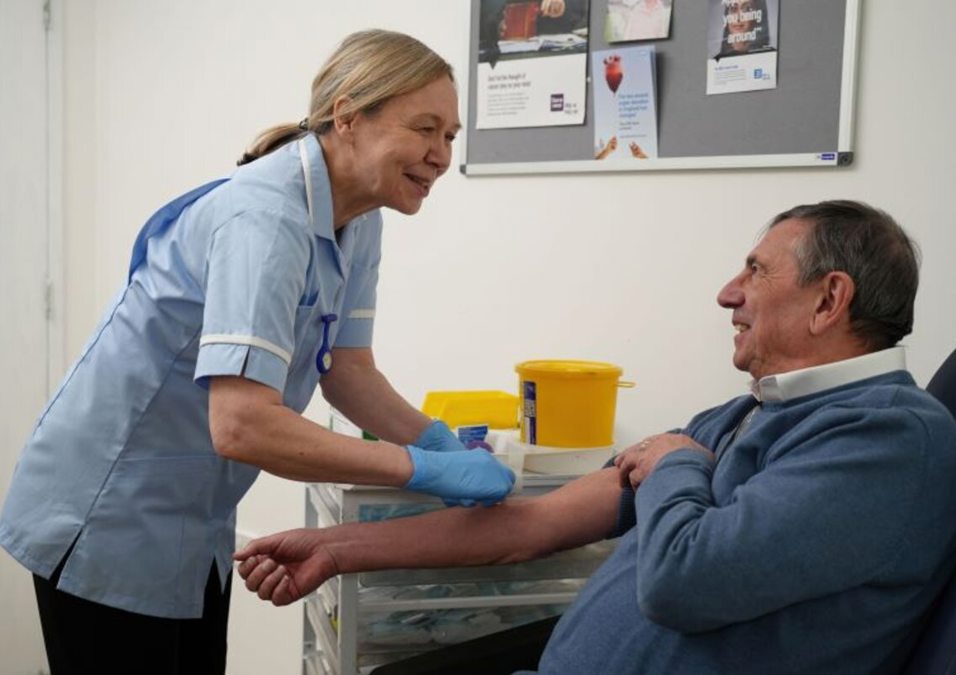Exercise and Prostate Cancer Study

SIGN UP FOR YOUR FREE DAY PASS TODAY!
A clinical trial led by exercise scientist Dr. Lee Jones at Memorial Sloan Kettering Cancer Center suggests that specific amounts of endurance exercise before surgery can significantly improve two essential biomarkers in men with early-stage prostate cancer, potentially leading to better outcomes.
“This phase 1a clinical trial is the first to explore exercise therapy in patients with any cancer diagnosis,” says Dr. Jones, head of the Exercise Oncology Program at MSK.
The findings were published in JAMA Oncology in July 2024.
“We believe these results can benefit individuals with this diagnosis and mark a significant step forward in rigorously investigating the impact of exercise on cancer progression and spread,” Dr. Jones adds.
Here, Dr. Jones answers questions about the clinical trial.
Why Study Exercise and Prostate Cancer?
Previous research, including our own, indicated that self-reported exercise is linked to a lower risk of prostate cancer progression.
We also found that men who regularly exercised had a reduced risk of dying from prostate cancer compared to those who did not.
However, these conclusions were based on observational data. To rigorously test this observation, we needed prospective trials where men are specifically “treated” with controlled exercise therapy, similar to how drugs are tested and prescribed—defining duration, frequency, and intensity.
We had several questions, such as the maximum feasible amount of structured exercise men with prostate cancer could perform with good compliance and whether exercise had a biological effect on the tumor itself.
We needed direct testing to answer these questions.
Why Conduct a Clinical Trial?
In collaboration with my colleagues at MSK, many of whom are medical oncologists testing new cancer drugs, I realized we should investigate exercise therapy's effects on cancer the same way we test new drugs.
A phase 1 clinical trial for a new drug assesses its safety and toxicity at different dose levels to determine the most appropriate dosage for larger studies.
It also looks for biological activity to indicate whether the drug has an anti-tumor effect.
We applied these principles to exercise therapy in cancer patients, aiming to determine the most suitable dose of exercise therapy that men could comply with and that would impact tumor biology, termed the recommended phase 2 dose.
Why Focus on Prostate Cancer?
Prior trials showed that exercise therapy helps men manage the side effects of prostate cancer and its treatment.
To test its effects on prostate cancer itself, we chose men scheduled for prostate cancer surgery.
This allowed us to examine changes in the tumor before and after exercise therapy by analyzing tumor samples taken at diagnosis and during surgery.
At MSK, there is typically a four-week window between diagnosis and surgery, which varies by hospital.
This four-week period allowed us to test the effect of exercise therapy alone, without any participants undergoing treatments like radiation or chemotherapy.
Conducting the Clinical Trial
To ensure the trial's rigorous conduct, we prioritized making it convenient for patients.
We developed the Digital Platform for Exercise (DPEx), a patient-focused approach where every aspect of the study (except standard clinical procedures) takes place at home.
The trial included 53 inactive men aged 47 to 74, with more than a third identifying as nonwhite.
We provided a study kit delivered to each patient's home, including a treadmill, an iPad with necessary apps, a smartwatch, a continuous glucose monitor, a blood pressure cuff, and a digital scale.
Before starting exercise therapy, all men underwent a fitness assessment to ensure safety and personalize the exercise intensity.
Participants were enrolled in increasing doses of exercise therapy, starting with 90 minutes per week and progressing to 150, 225, 300, 375, and 450 minutes per week.
Each exercise session involved walking on a treadmill, with intensity ranging from easy to hard and duration from 20 to 90 minutes, depending on the assigned dose level.
Our exercise physiologists monitored sessions in real-time via Zoom.
Measuring Exercise Impact on the Tumor
We measured two biomarkers associated with prostate cancer outcomes:
Ki-67 - A marker of cancer cell proliferation.
PSA (Prostate-Specific Antigen) - A well-established marker for prostate cancer risk and progression.
We aimed to see if exercise reduced these biomarkers.
It's important to note that our study sought a "signal" to indicate if exercise impacts the tumor, not whether it leads to longer survival or better outcomes, which would require more extensive clinical trials.
Key Findings on Exercise Amount
We found that inactive men could consistently complete very high levels of exercise therapy without serious adverse events, demonstrating safety.
We determined that 225 minutes per week (45 minutes of moderate exercise five times a week) was the appropriate dose, impacting prostate cancer biomarkers.
Lower doses did not affect biomarkers, while higher doses showed similar reductions but with diminishing returns.
From a prostate cancer perspective, this finding indicates that excessive exercise beyond 225 minutes per week is unnecessary.
Future Research Steps
In collaboration with Dr. Paul Boutros, a prostate cancer genomics expert at UCLA, we have initiated a phase 2 clinical trial using the 225-minute dose level to better understand how exercise affects prostate cancer progression.
We also plan to start clinical trials for other solid-tumor cancers, exploring whether cancers with specific genetic mutations respond differently to exercise.
MSK is committed to investigating the relationship between lifestyle factors like diet and exercise and cancer.
We look forward to using clinical trials to rigorously explore exercise's potential to impact various cancers.
Source: mskcc
The opinions shared in the GymNation blog articles are solely those of the respective authors and may not represent the perspectives of GymNation or any member of the GymNation team.































































